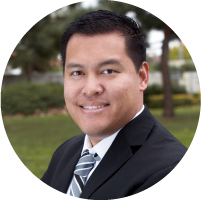Digital Health Corner Editor: Parisa Vatanka, PharmD, CTTS
 “Healthcare is so behind in technology!”
“Healthcare is so behind in technology!”
I disagree. However, this sentiment may be commonly heard from consumers or even our colleagues. When discussing the advancements in health technology, the practice setting needs to be considered. Technology application within some settings may not be optimized yet, but there are practice settings where technology application appears to be straight out of a science fiction film with AI, robotics, and augmented reality tools transforming care delivery. As William Gibson famously stated, “the future is already here – it’s just not evenly distributed.”
The Tools are Available
Within the consumer space, there is already a myriad of digital health apps, devices, and wearables available to support self-management of health. Personal health records (PHR) are now available to allow consumers access to data to personally manage their health information in one platform. Data may be sourced from medical, lab, immunization, and pharmacy records as well as diet and exercise trackers to build a comprehensive view of an individual’s total health and wellness. Some of these consumer-focused tools include activity trackers that can be used to set goals and compete with friends, gamifying fitness into a competition with “achievements” and “awards”. Additional examples include Bluetooth-enabled blood glucose monitors, EKG devices, chronic medical condition management (e.g. diabetes, heart disease), medication reminder apps, and sleep trackers. Digital health is a rapidly evolving area and, as we have all witnessed during the current pandemic, its relevance and utility has been realized like never before as virtual care has enabled continued access to essential health care services.
The Key is Interoperability
One of the major challenges in digital health remains limited standards around interoperability among products and across practice settings. Interoperability is defined as the ability for disparate technology systems to communicate. This aspect is key to making these technologies convenient and practical for end-users, both health care providers and consumers/patients. The lack of standardization prevents ease of communication between these systems, increasing difficulty for a consumer if they need to start managing multiple different digital health tools at the same time.
What Can Pharmacists Do?
Community pharmacists are in the front lines serving as the most accessible health care provider to consumers and patients. Despite the challenge of interoperability, pharmacists are in a position to support and guide consumers and patients on how to effectively integrate the use of these tools in their daily lives. There is a distinct opportunity to improve medication treatment outcomes by combining the use of digital health tools to assist individuals in a more comprehensive, active approach to self-management of health and wellness.
I encourage pharmacists to keep up to date on digital health technologies as consumers and patients will increasingly be engaging us to help them navigate options. Pharmacists can serve as curator, translator, and coach to assist consumers and patients in the selection of appropriate digital health tools, and, importantly, interpretation and application of the data to improve treatment outcomes and empower individuals to be more informed, active participants in their care.
About the Author
Tony Dao, PharmD, CPHIMS, CSSBB, LSSBB, PMC HI is a pharmacy informatics specialist for CHOC Children’s and co-founder of the Pharmacy Informatics Academy. He received his pharmacy degree from USC School of Pharmacy in 2012 and worked on the EHR build and implementation at Ventura County Healthcare Agency, remaining there for multiple projects until 2017. He is also a per-diem clinical pharmacist for Kindred Hospital Los Angeles. He started the first pharmacy informatics podcast in 2019, Pharmacy, IT, & Me, as a means to educate students and pharmacists on the ever-evolving field. He has been a past president and Pharmacist of the Year of the Orange County Pharmacists Association and is a current Editorial Advisory Board member of Pharmacy Times and a member of the ASHP Section of Pharmacy Informatics and Technology.

